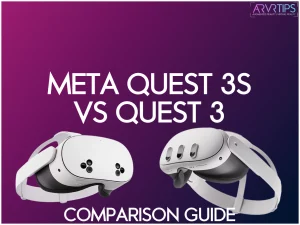Meta’s VR headset family has grown, and it’s more diverse than ever. We’ve got the budget-friendly Quest 3s and the premium Quest 3, each catering to different needs and budgets. In this Meta Quest 3s vs Quest 3 comparison guide, I’ll share with you my experience using these two VR headsets.
When choosing between the Quest 3s and Quest 3, consider these factors:
- Price point and your budget
- Desired visual fidelity and immersion
- Mixed reality capabilities
- Comfort for extended use
- Processing power for your favorite apps
Below are a ton of details for you to check out!
Summary of the Meta Quest 3s vs Quest 3
| Feature | Meta Quest 3s | Meta Quest 3 |
| Price | ⭐⭐⭐⭐⭐ | ⭐⭐⭐ |
| Display | ⭐⭐⭐⭐ | ⭐⭐⭐⭐⭐ |
| Processing Power | ⭐⭐⭐⭐ | ⭐⭐⭐⭐⭐ |
| Mixed Reality | ⭐⭐⭐ | ⭐⭐⭐⭐⭐ |
| Battery Life | ⭐⭐⭐⭐⭐ | ⭐⭐⭐ |
| Comfort | ⭐⭐⭐⭐ | ⭐⭐⭐⭐⭐ |
| Storage Options | ⭐⭐⭐⭐ | ⭐⭐⭐⭐⭐ |
| Overall Value | ⭐⭐⭐⭐⭐ | ⭐⭐⭐⭐ |
| Buy Now | Buy Quest 3s | Buy Quest 3 |
- Summary of the Meta Quest 3s vs Quest 3
- Meta Quest 3s vs Quest 3 Design and Comfort
- Meta Quest 3s vs Quest 3 Display Technology: Resolution and Visual Fidelity
- Meta Quest 3s vs Quest 3 Performance
- Meta Quest 3s vs Quest 3 Mixed Reality Capabilities
- Meta Quest 3s vs Quest 3 Audio Experience
- Meta Quest 3s vs Quest 3 Battery Life
- Meta Quest 3s vs Quest 3 Storage Options
- Meta Quest 3s vs Quest 3 Controllers Comparison
- Meta Quest 3s vs Quest 3 Software Ecosystem
- Meta Quest 3s vs Quest 3 Price Point
- Who Should Choose the Quest 3s?
- Who Should Opt for the Quest 3?
- Frequently Asked Questions About Meta Quest 3s vs Quest 3 (FAQs)
- Conclusion
Meta Quest 3s vs Quest 3 Design and Comfort
I’ve had the chance to try both headsets, and boy, do they feel different! The Quest 3s has a slightly chunkier design, reminiscent of the Meta Quest 2, but surprisingly, it’s lighter on the head.

On the flip side, the Quest 3 has a 40% slimmer optic profile. A lot of this is due to the pancake lenses, which are much slimmer but more expensive to make.
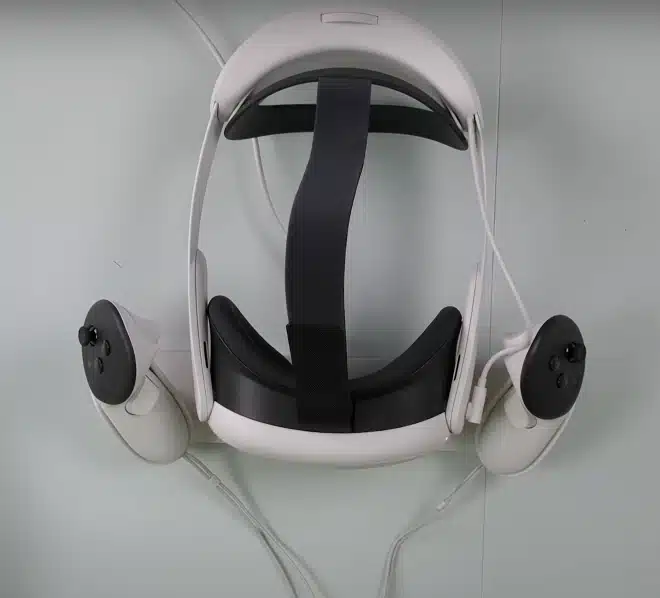
Despite the Quest 3’s slimmer profile, it’s actually a gram heavier than the Quest 3s! This difference is negligible, but it shows how compact the Quest 3’s tech is.
One thing I love about both headsets is the attention to detail in the facial interface. They’ve improved the cushioning and ventilation, which means less “VR face” after long gaming sessions.
Winner: Tie
Meta Quest 3s vs Quest 3 Display Technology: Resolution and Visual Fidelity
The Quest 3s boasts a respectable 1832 x 1920 pixels per eye. This is in line with the Quest 2, which has fresnel lenses as well.
The Quest 3 has a 4K+ Infinite Display with 2064 x 2208 pixels per eye. The pancake optics offer better displays and reduce that pesky “screen door” effect.
Field of view is another crucial factor. The Quest 3s gives you a 96° horizontal and 90° vertical view. It’s decent, but nothing like the Quest 3, which has an expansive 110° horizontal and 96° vertical field of view.
Both headsets support high refresh rates, but the Quest 3 offers an extra 120Hz capability. The buttery smoothness of 120Hz in fast-paced games is awesome to experience in virtual reality. The Quest 3s tops out at 90Hz, which is still great for most applications.
Winner: Meta Quest 3
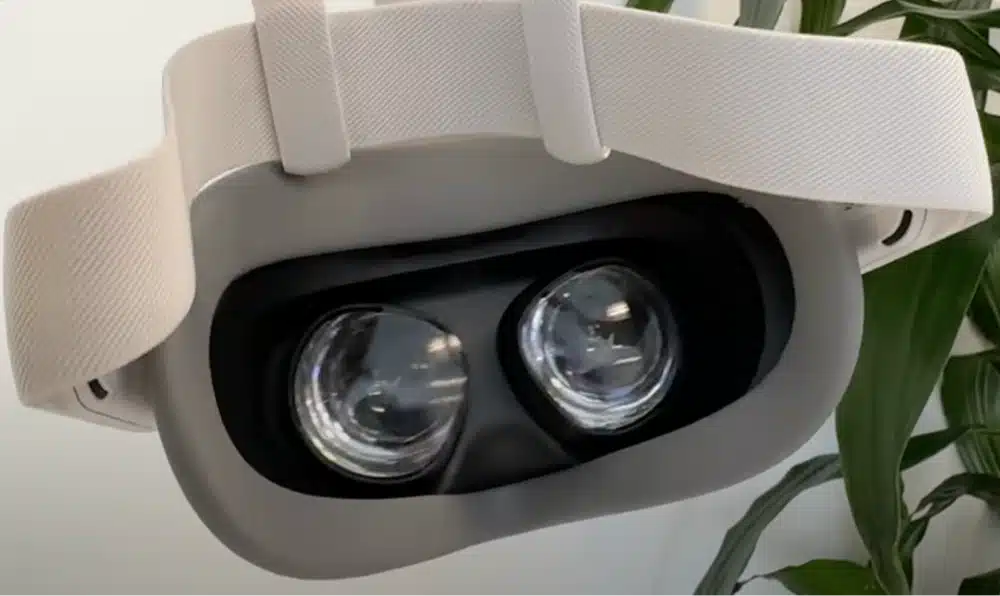
Meta Quest 3s vs Quest 3 Performance
The Quest 3s and Quest 3 both come equipped with the Qualcomm Snapdragon XR2 Gen 2 chipset. This bad boy offers 2X faster GPU performance compared to the Quest 2. With Meta releasing more and more exclusive games for the Quest 3 platform, the 3s should be included as well.
When it comes to RAM, we’ve got a tie. Both models are sporting 8GB of memory.
If you have the Meta Quest 2 or earlier, the number one reason to upgrade is for the extra performance. I love that Meta used the same chipset in the 3s and the 3.
Winner: Tie
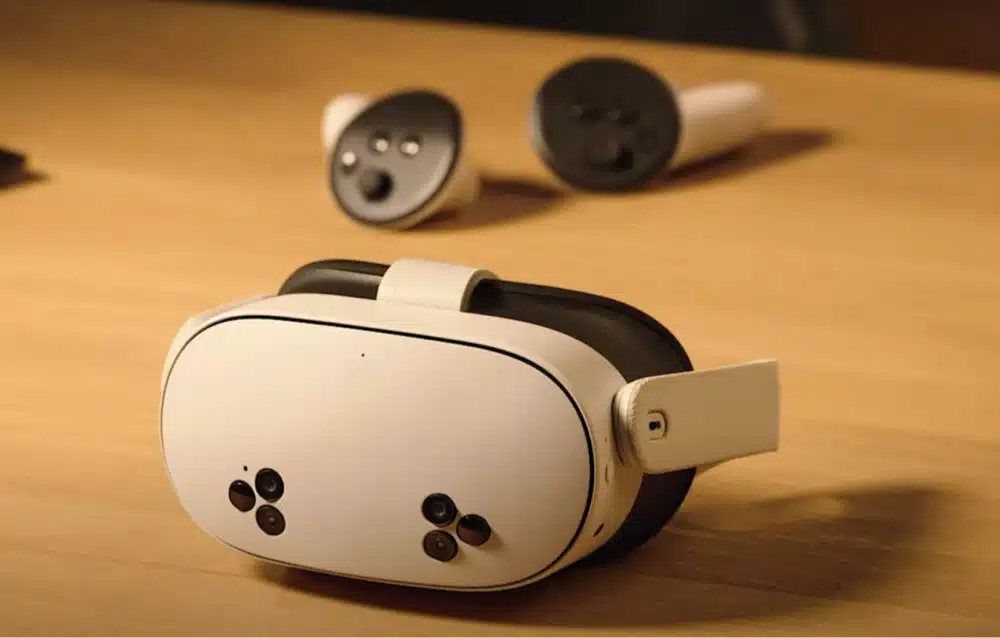
Meta Quest 3s vs Quest 3 Mixed Reality Capabilities
The Quest 3 is a mixed reality powerhouse. Its full-color passthrough is nothing short of magical. The depth sensor takes things to another level, allowing for precise mapping of your environment. This means virtual objects can interact with your real-world space in ways that’ll make you question reality.
On the other hand, the Quest 3s offers more limited mixed reality features. The Quest 3s has high quality full-color passthrough but no depth sensor. This makes it good for watching mixed reality content, but less accurate for using hand tracking and environment mapping features.
While the Quest 3s offers a taste of mixed reality, the Quest 3 is where this technology truly shines.
Winner: Meta Quest 3

Meta Quest 3s vs Quest 3 Audio Experience
The Quest 3 comes has enhanced spatial audio that’s 40% louder than the Quest 2. I’ve always thought the soundstage is wide, and the directional audio is pinpoint accurate.
The Quest 3s, while not quite as robust, still offers a solid audio experience. It builds on the Quest 2’s audio system with some improvements in clarity and bass response.
One big difference is that the Quest 3s has no 3.5mm headphone jack and you need to use Bluetooth headphones to enhance your audio.
Winner: Meta Quest 3

Meta Quest 3s vs Quest 3 Battery Life
Battery life can make or break your VR sessions, and there’s a clear winner here.
The Quest 3s has an impressive 5-hour battery life. Its 16.7 watt-hour capacity means you can dive into epic gaming sessions or binge-watch your favorite shows without constantly reaching for the charger. In my marathon testing, I managed to squeeze out nearly 5.5 hours playing games and watching movies.
On the flip side, the Quest 3 comes in with a rated battery life of approximately 2.2 hours. Now, don’t get me wrong – this is still enough for most VR sessions. But if you’re planning an all-day VR event, you’ll need to plan your charging breaks.
While the Quest 3s is the clear winner in the battery department, don’t let the Quest 3’s shorter battery life deter you. With smart power management and the right accessories (an elite battery strap with external battery), you can keep your VR adventures going strong on either headset.
Winner: Meta Quest 3s
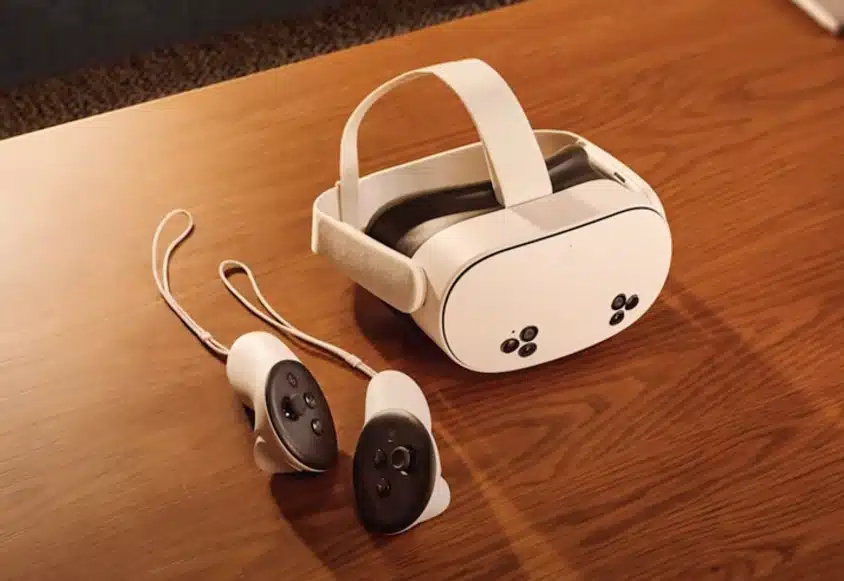
Meta Quest 3s vs Quest 3 Storage Options
The Quest 3s comes in two flavors: 128GB and 256 GB. With VR games getting larger on average, I will always recommend 256 GB to my friends.
The Quest 3 has 128GB and a whopping 512GB variant. That 512GB model is perfect if you want to load media onto it.
When it comes to app sizes, most VR games range from 1GB to 10GB, with some heavy hitters pushing 15GB or more. Here’s a quick breakdown of what you can expect:
- 128GB: Comfortably holds 5 large games or 20 smaller apps
- 256GB: Comfortable holds 10 larger games and 40 smaller apps
- 512GB: Comfortably holds 20 larger games and 80 smaller apps
One thing to keep in mind: neither headset supports expandable storage.
Pro tip: Both headsets support cloud saves, so you can always uninstall and reinstall games without losing progress. It’s a great way to manage your library if you’re tight on space!
Winner: Quest 3
Meta Quest 3s vs Quest 3 Controllers Comparison
The Quest 3s and 3 both come with the same controllers. They’ve ditched the tracking rings found on the Quest 2 controllers, which I think makes them look sleek. The haptic feedback is more precise, and the button layout is intuitive.
For the Quest 3s, Meta added a new ‘action button’ which I’ve found incredibly useful for quick commands in games and apps.
While both offer the same controllers, remember that the Quest 3’s has advanced hand tracking to give it a slight edge in terms of immersion and versatility.
Winner: Tie
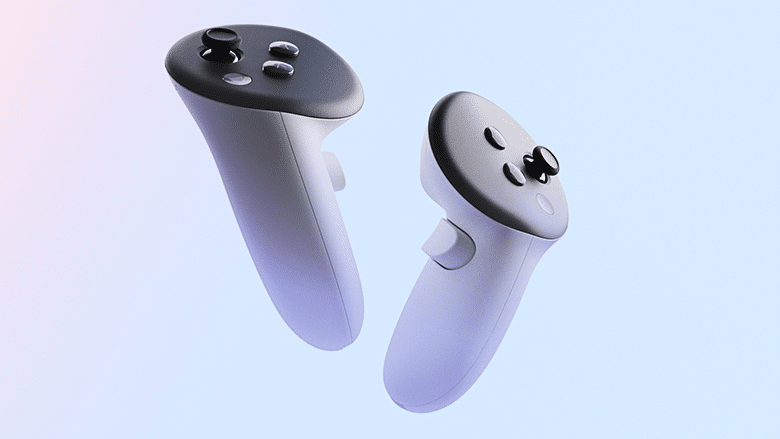
Meta Quest 3s vs Quest 3 Software Ecosystem
The good news is that both the Quest 3s and Quest 3 have access to the vast Quest Store library. Both headsets can run all the popular titles like Beat Saber, Superhot VR, and Population: One. However, there are some nuances to consider:
- Performance: While both can run the same apps, the Quest 3’s superior hardware means better graphics and smoother performance in more demanding titles. I’ve noticed this particularly in games with complex environments or physics.
- Exclusives: As of now, there aren’t any Quest 3 exclusives that won’t run on the Quest 3s. However, future titles might take advantage of the Quest 3’s advanced features, potentially leaving Quest 3s users with a slightly watered-down experience.
- Mixed Reality Apps: The Quest 3 has a clear advantage here. Its advanced passthrough and depth sensing capabilities mean a more immersive experience in mixed reality applications.
Looking to the future, both headsets are well-positioned for long-term software support.
Winner: Tie (right now)
Meta Quest 3s vs Quest 3 Price Point
The Quest 3s comes in at $299 for the smaller storage option and $399 for the upgrade. This price point is a game-changer, making VR more accessible than ever. It’s positioned as the go-to option for those dipping their toes into VR or casual users who want a solid experience without breaking the bank.
On the other hand, the Quest 3 starts at $499.99 for the 128GB model. It’s a premium price for a premium product, aimed at enthusiasts and power users who demand the best VR experience available.
At $299, it’s hard not to like the Meta Quest 3s. This price should make it a popular Christmas gift.
Winner: Meta Quest 3s
Who Should Choose the Quest 3s?
The Quest 3s is a fantastic piece of tech for VR newcomers, casual gamers, and budget-conscience buyers. These are some of the scenarios where the Quest 3s really shines:
- Family Game Nights: Its ease of use and affordable price make it great for family-friendly VR experiences.
- Fitness Routines: While not as advanced as the Quest 3, it’s still excellent for VR workouts and dance games.
- Media Consumption: Watching movies or YouTube videos in VR is a breeze on the Quest 3s.
- Basic Productivity: For simple tasks like virtual desktops or note-taking, it’s more than capable.
Most people who have never used virtual reality before will not notice or need some of the advanced features in the Quest 3 such as higher pixel density, better image quality, more augmented reality support. The price is $3,200 CHEAPER than the Apple Vision Pro!
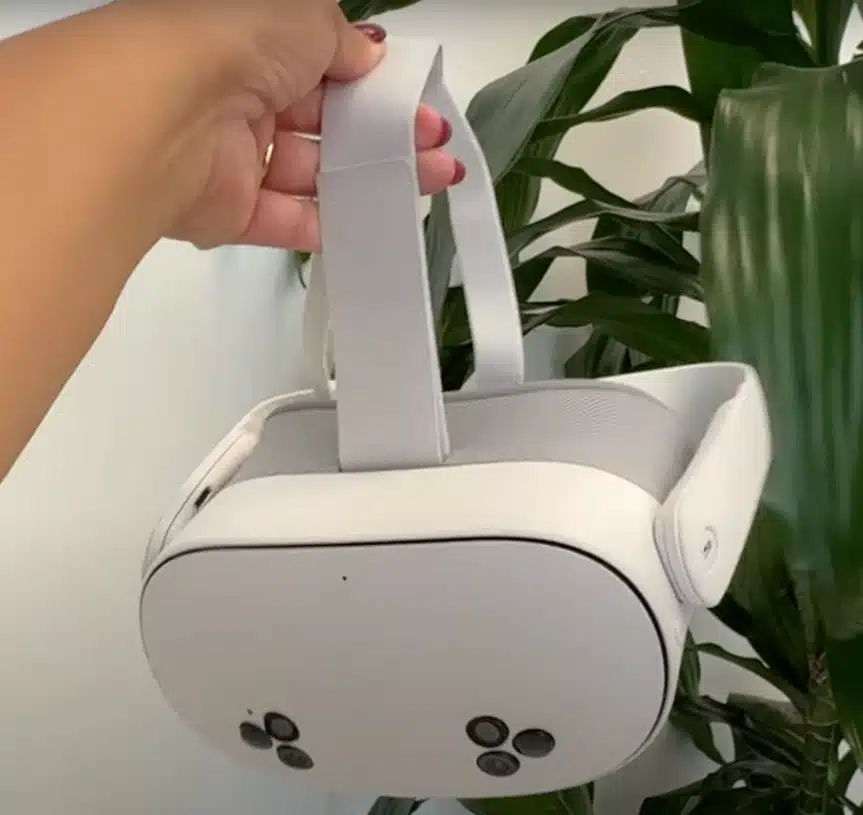
Who Should Opt for the Quest 3?
The Quest 3 is a powerhouse for VR superuser who like immersive gaming or advanced mixed reality experiences. Some of the advanced features on the Quest 3 that users will appreciate are:
- Superior Resolution: The 4K+ Infinite Display offers unparalleled visual clarity.
- Enhanced Processing Power: Smoother performance in demanding applications and games.
- Advanced Hand Tracking: More natural interaction in supported apps.
- Full-Color Passthrough: Seamless blending of virtual and real worlds.
- Wider Field of View: More immersive experiences across the board.
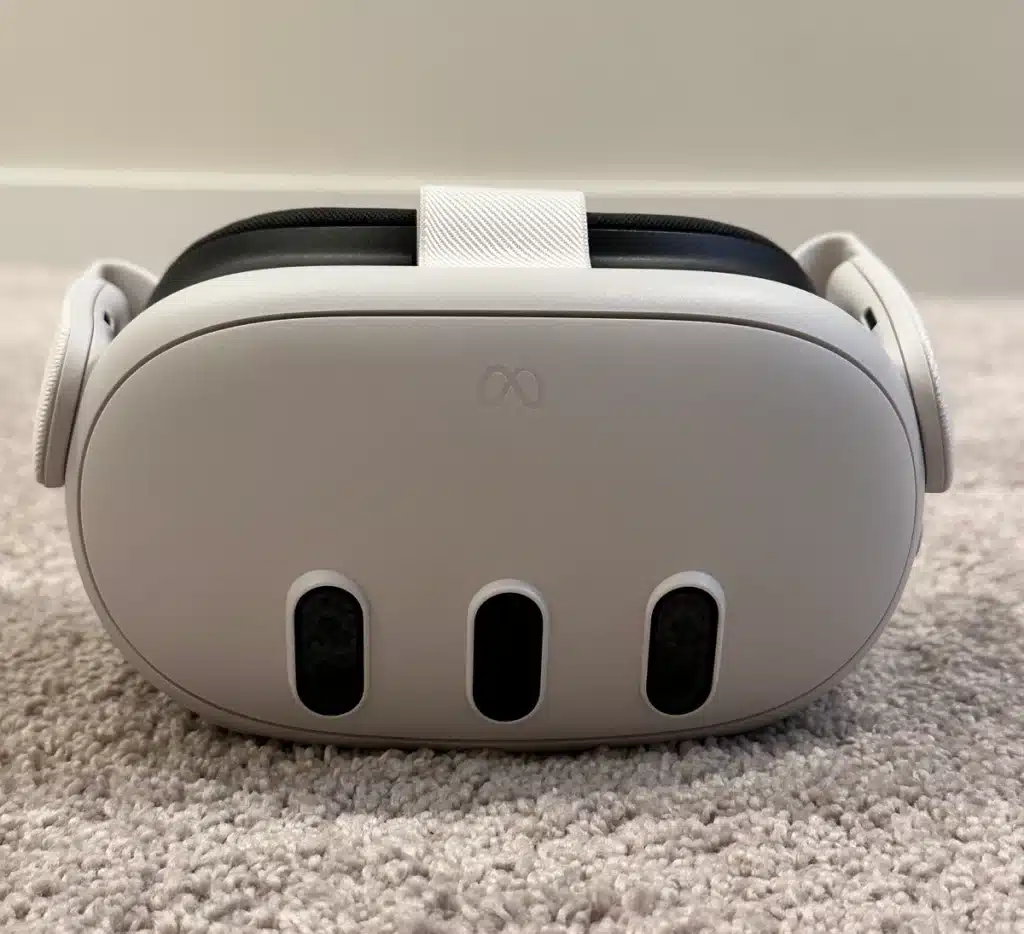
Frequently Asked Questions About Meta Quest 3s vs Quest 3 (FAQs)
What’s the main difference between Meta Quest 3s and Quest 3?
The main differences lie in price, display technology, and mixed reality capabilities. The Quest 3s is more affordable at $299, while the Quest 3 offers superior display resolution and advanced mixed reality features at a higher price point of $499.99.
Can I use my Quest 2 games on both the Quest 3s and Quest 3?
Yes, both the Quest 3s and Quest 3 are backward compatible with Quest 2 games. However, some games may perform better or have enhanced features on the Quest 3 due to its more powerful hardware.
Which headset has better battery life, the Quest 3s or Quest 3?
The Quest 3s boasts a longer battery life of approximately 5 hours, compared to the Quest 3’s rated battery life of about 2.2 hours. However, actual usage time may vary depending on the applications and settings used.
Are the controllers the same for both Quest 3s and Quest 3?
While both headsets feature redesigned controllers compared to the Quest 2, the Quest 3’s controllers are more advanced with a slimmer, ring-free design. The Quest 3s controllers include a new ‘action button’ but otherwise are more similar to previous models.
Is the Quest 3s worth buying if I already own a Quest 2?
If you’re satisfied with your Quest 2, the Quest 3s might not offer a significant upgrade to justify the purchase. However, if you’re looking for improved performance and slightly better visuals at a similar price point, the Quest 3s could be a worthwhile upgrade.
Conclusion
The Quest 3s and Quest 3 are like siblings – related, but with distinct personalities. Here’s a quick rundown of the key differences in these two headsets:
- Price: Quest 3s at $299 vs Quest 3 starting at $499.99
- Display: Quest 3s with 1832 x 1920 per eye vs Quest 3’s 4K+ Infinite Display
- Mixed Reality: Basic on Quest 3s, advanced on Quest 3
- Battery Life: 5 hours on Quest 3s vs 2.2 hours on Quest 3
- Storage: Up to 256GB on Quest 3s, up to 512GB on Quest 3
The Quest 3s Meta headset is perfect for those new to VR or casual users who want a taste of the future without a hefty price tag.
The Quest 3 is for those who want to push the boundaries of what’s possible in VR. Yes, it’s pricier, but for power users, developers, or anyone deeply invested in VR, it’s worth every penny.
VR is an incredible journey, and both these headsets are fantastic vehicles to take you there. Whether you choose the accessible Quest 3s or the powerhouse Quest 3, you’re in for an amazing ride.

